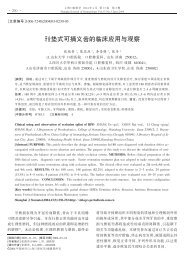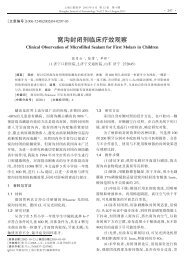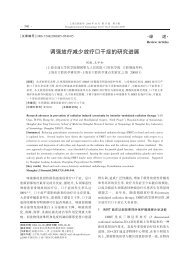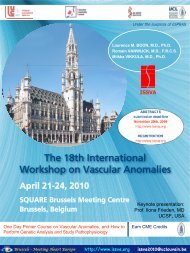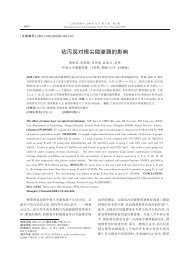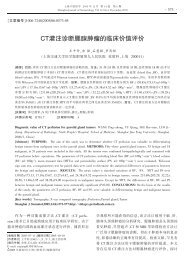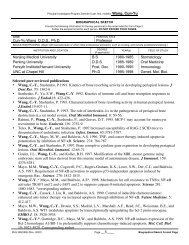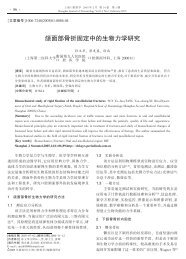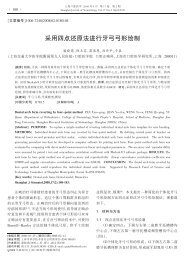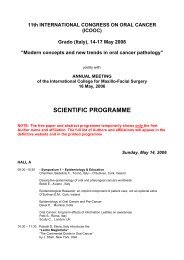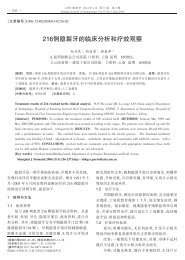core curriculum cleft lip/palate craniofacial anomalies
core curriculum cleft lip/palate craniofacial anomalies
core curriculum cleft lip/palate craniofacial anomalies
Create successful ePaper yourself
Turn your PDF publications into a flip-book with our unique Google optimized e-Paper software.
Core Curriculum for Cleft Palate and other Craniofacial Anomalies<br />
If adequate oral pressure cannot be achieved with typical placement of the<br />
articulators, then an alternative constriction site may be used and pressure is<br />
created below the level of constriction. Some common compensatory<br />
articulations include:<br />
a. Glottal stops – closure of the vocal folds at the level of the glottis.<br />
b. Pharyngeal fricative – posterior positioning of tongue to posterior<br />
pharyngeal wall, occurring on fricatives and affricates.<br />
c. Pharyngeal stop – posterior positioning of lingual base to pharyngeal<br />
wall, occurring on /k,g/.<br />
d. Posterior nasal fricative – coarticulated nasal snort/flutter with any<br />
pressure consonant.<br />
e. Mid-dorsum palatal stop – usually made in an approximate place of<br />
consonant /j/ in attempt to valve airflow.<br />
5. Obturation of any hard <strong>palate</strong> fistulas may result in elimination of nasal<br />
leakage, improved resonance, and VP closure. Use of a speech bulb may be<br />
indicated for patients demonstrating reduced intraoral pressure, resulting in<br />
difficulty producing pressure consonants despite speech therapy.<br />
6. Monitor phonation for vocal hoarseness, volume, and pitch levels with<br />
speech therapy for remediation or referral to otolaryngology.<br />
C. Preschool, School-Aged, and Adult: As speech articulation is acquired, the<br />
speech/language pathologist can begin differential diagnosis of velopharyngeal<br />
functioning.<br />
1. Continued monitoring of hearing acuity.<br />
2. Speech disorders related to velopharyngeal function.<br />
a. Hypernasality – the perception of excessive nasal resonance during<br />
production of vowels and semi-vowels resulting from inadequate<br />
separation of the oral and nasal cavities.<br />
b. Hyponasality – reduction of normal nasal resonance usually resulting<br />
from blockage of nasal airway by various causes.<br />
c. Mixed hyper/hypo – simultaneous occurrence in the same speaker,<br />
usually resulting from incomplete velopharyngeal closure and high<br />
nasal resistance that is not sufficient to block nasal resonance<br />
completely.<br />
d. Cul-de-sac – variation of hyponasality associated with tight anterior<br />
nasal constriction, often resulting in muffled quality.<br />
e. Nasal air emission – nasal escape associated with production of high<br />
oral pressure consonants. Occurs when air is forced through<br />
incompletely closed velopharyngeal port, and can be audible or<br />
visible (evidenced by mirror fogging, nasal grimace, and/or nasal<br />
flaring).<br />
f. Compensatory articulations.<br />
g. Reduced intraoral pressure – reduced build up of air in the oral cavity<br />
during production of pressure consonants due to inadequate valving<br />
of the VP mechanism.<br />
30<br />
© 2004 American Cleft Palate-Craniofacial Association



